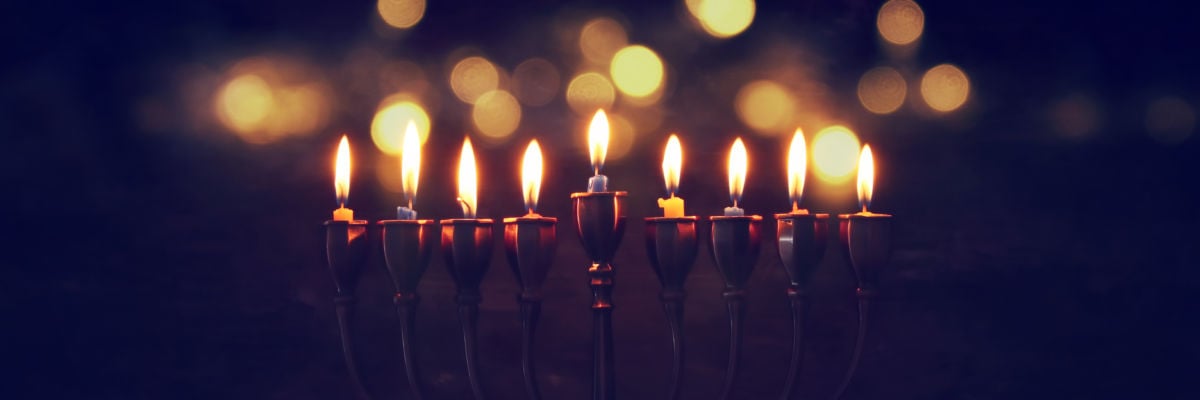
The ancient Jewish people worshiped God within a cloth tent (“Tabernacle”) and a solid stone temple between roughly 1400 B.C. to A.D. 70. Within them were lots of odd furniture items, such as an altar, an incense altar, a lamp, and a water basin.
From a Catholic perspective, these items fit perfectly into a Catholic Mass. So it can be helpful to look at these things for greater depth of understanding at Mass. But from a non-Catholic perspective, these things look like a bunch of superstitious nonsense. Non-Catholics also would benefit from understanding their background
The outer courtyard
Within the outer court of the Tabernacle and the Temple were two pieces of holy furniture: the bronze altar and the bronze basin.
The bronze altar (Exod. 27:1-8). Within the outer court, there was an altar of ascension or sacrifice. This is comparable with the Catholic altar. The Jewish sacrificial altar was like a box with four horns on the top ends. It was made from acacia wood and plated with bronze. Within the altar was a fire that had been lit by God (Lev. 9:24). Just as God had appeared like a consuming fire on Sinai, so the fire of the altar symbolized his presence in the new Sinai (Exod. 24:17).
On top of the altar was a bronze grating, and the priests would sacrifice dead animals to God by burning them on top of this grating. The priestly duty to “till and keep” the Tabernacle (Num. 3:7-8, 8:26, 18:5-6) was fulfilled through the sacrifices. Those two words (till and keep) were commanded of Adam in the Garden of Eden (Gen. 2:15), indicating that the Tabernacle was a new Garden of Eden.
The bronze basin (Exod. 30:17-21). Next to the altar was a water bowl or laver called the bronze basin. It was comparable to a Catholic holy water font. The Aaronic priests would cleanse their hands and feet in this basin as a ritual cleansing, for they were interacting with God’s invisible presence on God’s property. God’s presence was lethal, and the way to prevent themselves from dying was to cleanse themselves in the water (Exod. 30:20-21).
Since the whole Tabernacle complex was God’s property, the water within the basin was called “holy water” (Num. 5:17). God is all-holy, which implies that his property and possessions were holy, so, quite naturally, the water was holy, too.
The holy place
The holy place of the Tabernacle and Temple had three pieces of holy furniture: the golden menorah lamp, the golden table, and the golden altar of incense.
The golden menorah lamp (Exod. 25:31-40). There was a solid gold oil lamp that lit up the holy place. This is like the candles next to the altar at the Catholic Mass. The menorah lamp had six tree-like limbs, each of which had at the top of it an olive-shaped cup that was lit. The lamp reminded Israel of the tree of life, further identifying the Tabernacle as a new Eden.
Every day, the priest would change out the oil from the menorah lamp. The light represented God’s face, as can be seen in Aaron’s priestly prayer of Numbers 6:25: “The Lord make his face to shine upon you.” These six lights were movable, and they were directed towards a table with unleavened bread on it.
The golden table (Exod. 25:23-30). Across from the golden menorah lamp was a golden table that had bread and wine on it. The Catholic connection there should be apparent, for every Mass involves bread and wine. The Jewish table was made of acacia wood overlaid with gold. There were plates on top of the table that held the bread, bowls and flagons that held the wine, and plates and dishes for incense.
There were twelve unleavened bread cakes, with each loaf weighing around five pounds, meaning that there was sixty pounds of bread on the table. The bread symbolized the twelve tribes of Israel. The priest would change out the bread every Sabbath and would eat the bread in a holy place. The menorah lights were directed toward this table, so the lights would shine upon the loaves, indicating God’s light shining on Israel (Num. 6:25). The bread was called the “bread of the Presence” (Exod. 25:30) and was designated as an “eternal covenant” (Lev. 24:9).
The golden altar of incense (Exod. 30:1-10). Past the menorah lamp and table was the golden altar of incense. Catholics use incense at Mass as well. The Jewish altar of incense was right up against the holy of holies.
Aaron the priest would offer incense upon this altar once a day. While entering in to do this, he would have an ephod over his chest with twelve stones on it. This indicated that he represented all twelve tribes of Israel. The reason he would offer incense was because of the smoke it would produce. This recalled how God had appeared to Moses under the blurry cloak of smoky clouds upon Mount Sinai (Exod. 24:15-18).
The use of incense in the Tabernacle recreated God’s glorious theophany to Moses upon Sinai for all generations. Incense also blurred the priest’s vision so that he would not see all-holy God, and it also signified humanity’s ascent to God’s holy mountain of heaven.
The holy of holies
The holy of holies was where God dwelled as a cloud (Lev. 16:2), and the high priest alone (Aaron) could enter it. There was only one piece of furniture within this most holy place, and it was the most important of all.
The Ark of the Covenant (Exod. 25:10-22). Within the holy of holies was a golden chest with two angel statues attached to the top. The lid or flat top of the ark was called the mercy seat. The ark was made of acacia wood and plated with gold.
Within the ark were the two tablets that Moses came down Mt. Sinai with (the Ten Commandments), the flowered staff of Aaron the high priest, and a golden jar of the manna that came down from heaven (Heb. 9:4).
This ark was considered the holiest place, not only of the Tabernacle, but of the entire world. For just as God spoke from the peak of Sinai as a cloud, so the holy of holies was overshadowed with God’s cloud. God said, “There I will meet with you [Moses], and from above the mercy seat, from between the two cherubim that are on the ark of the testimony, I will speak with you about all that I will give you in commandment for the people of Israel” (Exod. 25:22). This piece of furniture is comparable to the Catholic tabernacle that contains the Eucharist in every Catholic Church.
The Tabernacle was immensely important to Israel. It housed the presence of God as a new Eden and new Sinai. Catholics are not pulling it out of a hat when they have the same furniture items as the Jews.
Learn more about these things in the Protestant scholar L. Michael Morales’s book, Who Shall Ascend the Mountain of the Lord? A Biblical Theology of the Book of Leviticus.



